#jacopo de sellaio
Text

Jacopo da Sellaio - Triumph of Time. Detail. 1485 - 1490
40 notes
·
View notes
Photo


Simonetta Vespucci (1453 - 1476)

Portrait of a Young Woman is believed to be Sandro Botticelli‘s, executed between 1480 and 1485. Others attribute authorship to Jacopo da Sellaio. The cameo she wears is a copy in reverse of "Nero's Seal", a famous antique carnelian representing Apollo and Marsyas, which belonged to Lorenzo de' Medici.
The art historian Aby Warburg first suggested the painting was an idealised portrait of Simonetta Vespucci (birth of Venus)
thnx fishstickmonkey & helenart555
#Sandro Botticelli#Botticelli#Renaissance#portrait#iconic#profile#Simonetta Vespucci#model#Medici#beauty#masterpiece#nose#Florence#lips
24 notes
·
View notes
Text

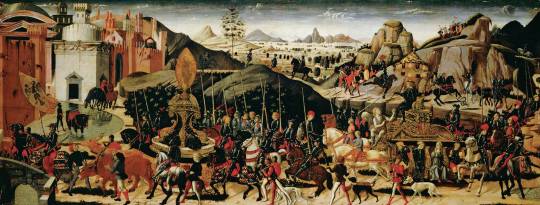

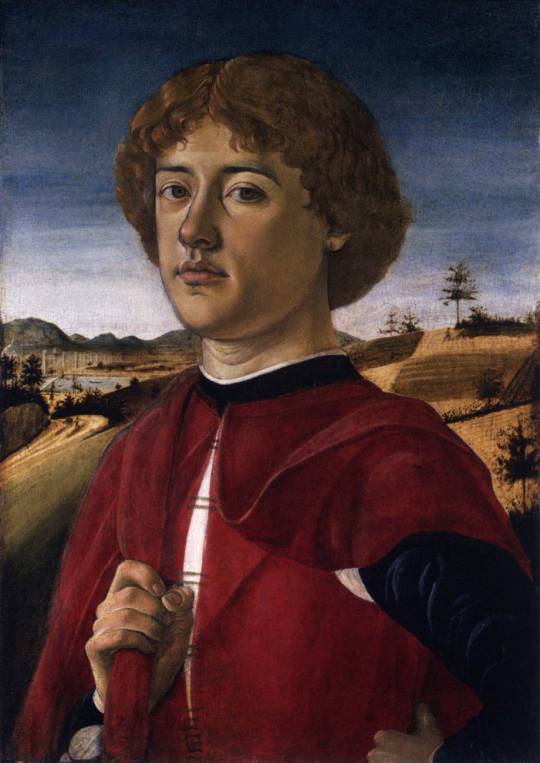

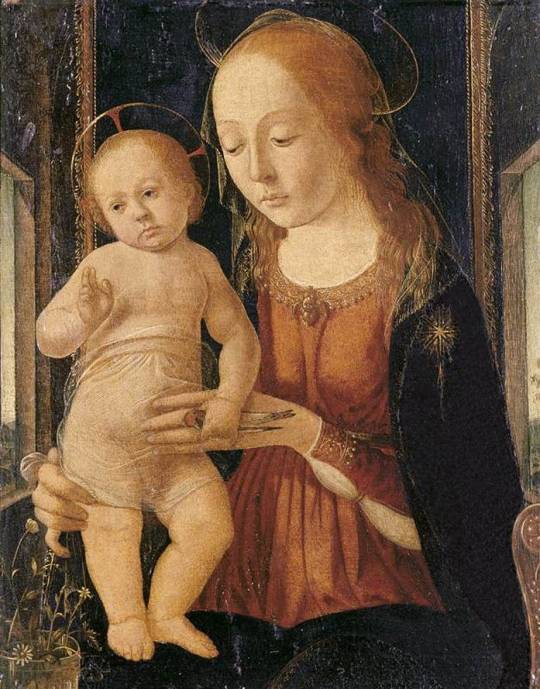



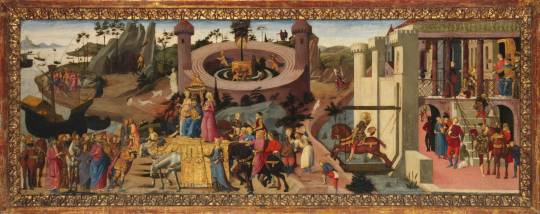

By: Amy Fredrickson
On this day in 1516, Florentine painter Biagio d'Antonio dei Tucci died. He was a prolific artist who was successful both in his native Florence and in other places in Italy; yet, he is often omitted from literature. His works were often confused with, and credited to more renowned artists like Perugino, Botticelli, and Ghirlandaio. Like Biagio, these artists also worked in Rome and decorated the Sistine Chapel during the 1480s. A similar instance occurred with commissions in Faenza, where Biagio was confused with the painters Andrea Utili and Giovanni Battista Utili who, coincidently, also resided in the town and painted cassoni.
As a result, scholars know little about Biagio’s early training. His style exhibits Florentine’s innovations of the late fifteenth-century, such as Fra Fillipo Lippi’s linear style of modeling, Verrocchio’s sculptural influence, and the integration of Netherlandish coloring. Biagio’s connection to Verrocchio is unknown, yet it is confirmed that he collaborated with the painter Cosimo Rosselli in 1470. At this point though, he was a fully trained artist.
Biagio specialized in works for domestic interiors, such as religious panel paintings featuring the Madonna and Child and decorative wedding chests exhibiting biblical and mythological scenes. Biagio favored rich colors that illuminated his subject matter. By 1472, he shared a workshop with Jacopo del Sellaio, with whom he collaborated on cassoni commissions. He established a large studio in Faenza by 1476, which he maintained for about thirty years.
While he was based in Faenza, Biagio traveled to various Italian cities to assist other artists on large commissions. For example, he aided Pietro Perugino with paintings in the Palazzo della Signoria. Then, between 1481 and 1482, he worked with Cosimo Rosselli on frescoes in the Sistine Chapel. Their works included The Last Supper and most likely The Crossing of the Red Sea.
Documents prove that he was still active in 1504 when he painted an altarpiece for the widow of Vincenzo Bazzolini depicting the Madonna and Child with Saints John the Evangelist and Anthony of Padua for the church of San Francesco in Faenza. After 1504, it is unknown whether he had other commissions or if he returned to Florence. Biagio d'Antonio dei Tucci died on June 1, 1516.
References:
"BIAGIO D'antonio Da Firenze In "Dizionario Biografico"". 2019. Treccani.It. http://www.treccani.it/enciclopedia/biagio-d-antonio-da-firenze_(Dizionario-Biografico)/.
Boskovits, Miklós, and David Alan Brown, et al, Italian Paintings of the Fifteenth Century. The Systematic Catalogue of the National Gallery of Art. (Washington, D.C., 2003).
Further Reading:
Bartoli, Roberta, Biagio d'Antonio, (Milan, 1999).
Images:
Virgin and Child Enthroned with Five Saints and Two Angels, 1470-75, Tempera on panel, 168 x 178 cm, Szépművészeti Múzeum, Budapest.
The Triumph of Camillus, 1470-75, Tempera on panel, 60 x 154 cm,
National Gallery of Art, Washington.
Scenes from the Story of Io, 1480s, Tempera on poplar panel, 74 x 133 cm, Private collection.
Portrait of a Young Man, c. 1470, Tempera on wood, 54 x 39 cm, Metropolitan Museum of Art, New York.
Portrait of a Boy, 1476-80, Oil and tempera on panel, 42 x 36 cm, National Gallery of Art, Washington.
Madonna and Child, 1490s, Oil on panel, 45 x 38 cm
Private collection.
Madonna Adoring the Child with an Angel, c. 1475, Tempera on panel, 74 x 54 cm, Museu de Arte, São Paulo.
Crucifixion, 1482, Fresco, Cappella Sistina, Vatican.
Arrest of Christ, 1482, Fresco, Cappella Sistina, Vatican.
Scenes from the Story of the Argonauts, c. 1465, Tempera on wood, gilt ornaments, 50 x 142 cm, Metropolitan Museum of Art, New York.
Chest and spalliera with the arms of Lorenzo Morelli and Vaggia Nerli (The Morelli Chest), 1472, Tempera on panel, The Courtauld Institute of Art, London.
#Italian Renaissance#Florence#Faenza#Rome#fifteenth century#andrea del verrocchio#Pietro Perugino#painting#wall painting#Fresco#biagio d'antonio tucci#Sistine Chapel
30 notes
·
View notes
Photo

San Juan Bautista, do. 1480, de Jacopo di Arcangelo di Jacopo, conocido como Jacopo del Sellaio (Florencia, 1441 - Florencia, 12 de noviembre de 1493), óleo sobre panel de álamo. En general 52 x 32.8 cm, enmarcado 67.3 x 48.3 x 7.6 cm. Colección Samuel H. Kress, National Gallery of Art.
2 notes
·
View notes
Photo
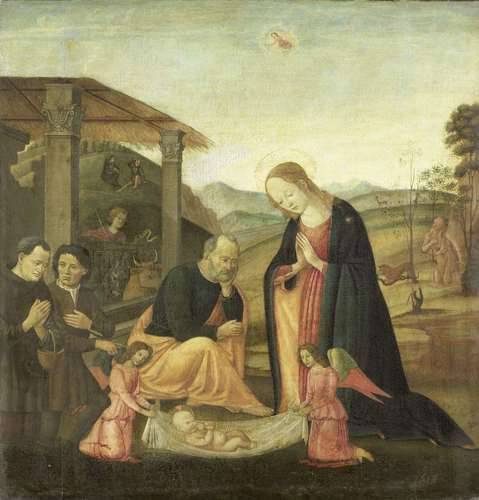
Adoration of the Christ Child by Jacopo del Sellaio, Museum of the Netherlands
De aanbidding van het kind. Voor de stal knielen Maria en twee herders voor het Christuskind dat in een doek gedragen wordt door twee engelen. Jozef kijkt somber toe met het hoofd op de linkerhand gesteund. In het landschap op de achtergrond links de verkondiging aan de herders, rechts de heilige Hieronymus met een leeuw.
7 notes
·
View notes
Text
RT @abrahamrammar: ¡Buenos días! Jacopo del Sellaio (ca. 1441 - 1493). ‘Historia de Psique’ (h. 1490, témpera y óleo sobre madera, 42.1 x 151.8 cm). Museum of Fine Arts, Boston. https://t.co/0XbFDDplU1
Artes / Dibujos November 05, 2019 at 09:04AM
0 notes
Photo
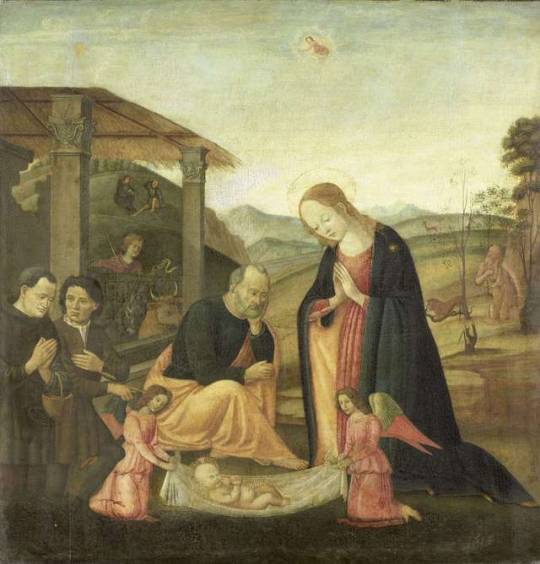
Adoration of the Christ Child by Jacopo del Sellaio, Museum of the Netherlands
De aanbidding van het kind. Voor de stal knielen Maria en twee herders voor het Christuskind dat in een doek gedragen wordt door twee engelen. Jozef kijkt somber toe met het hoofd op de linkerhand gesteund. In het landschap op de achtergrond links de verkondiging aan de herders, rechts de heilige Hieronymus met een leeuw.
https://www.rijksmuseum.nl/nl/collectie/SK-A-3428
5 notes
·
View notes